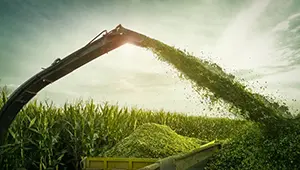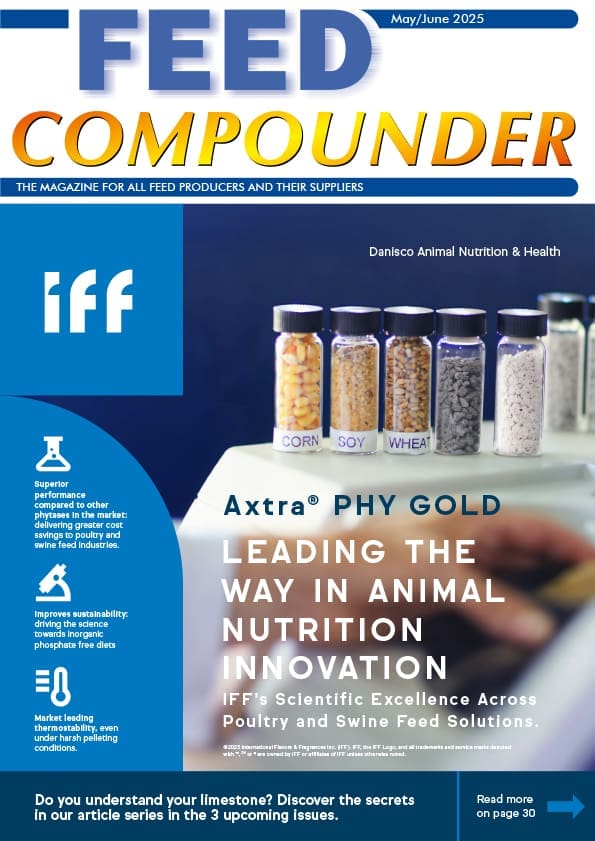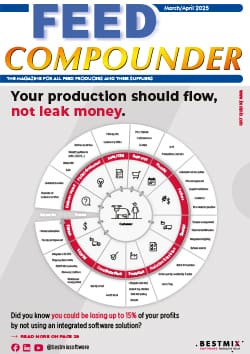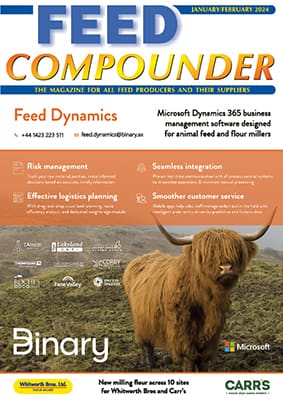The first maize silage analysis results for 2025 clearly show the impact of the atypical growing season and the need for attention to detail when formulating diets.
“The results suggest maize silage will offer some respite from the challenges of downward pressure on margins and variable grass silage stocks being faced by many dairy farmers,” observes Isabelle England, Ruminant Nutritionist with Trouw Nutrition GB. “Crops have the potential to feed well but careful balancing will be required to get the best from them.”

The maize season was characterised by a warm, dry spring across much of the UK. In most cases crops were drilled early into good seed beds and established rapidly.
However, a prolonged period of high summer temperatures and low rainfall resulted in low soil moisture, which impacted on-going growth and development. This resulted in inconsistent cob development and maturity and affected the development of the vegetative parts of the plant.
“While the overall consequence is more variable maize crops this winter, the results of over 1600 samples analysed at our laboratory in Ashbourne suggest that farmers can be encouraged by the prospects for feeding maize. That said, it will be vital to understand the analysis of the maize being fed, making regular analysis crucial.”
While average dry matter this year is only slightly lower than 2024 at 29.9%, there is a wide variation reflecting how quickly crops dried down in the field. Crops that dried quicker may have proved more difficult to compact in the clamp.
Uneven cob fill and less mature kernels, resulting from heat stress and lower soil moisture, have contributed to a small decline in starch content at 26.2% compared with 28.4% in 2024.
Starch degradability is also slightly lower at 76.8% suggesting that while rumen-available starch remains high, energy release may be marginally lower. Overall, energy levels are similar with ME averaging 11.1MJ/kgDM and average crude protein has increased to 8.3% while the supply of metabolisable protein is slightly lower.
With around 40% of the total dry matter in maize silage represented by the vegetative parts of the plant, fibre digestibility has a significant impact on how well crops will be digested.
“We have seen changes in the make-up of fibre this year, reflecting drought conditions and slightly ‘tougher’ plant material. While Neutral Detergent Fibre (NDF) has increased to 43.5% DM, Acid Detergent Fibre (ADF) has decreased, indicating that while there is more fibre in the plant, it will be more digestible.
“This is also reflected in lignin content, the proportion of indigestible fibre, which is down from 34.2g/kgDM to 30.2g/kgDM. Combined these results point to good fibre digestibility meaning cows will be able to make more of this valuable energy source.”
“These results offer some encouragement to dairy producers. Although starch content has fallen slightly, the high degradability means that attention will have to be paid to other energy sources in the diet. The higher NDF and lower acid load will help stabilise rumen function.”
The higher fibre and lower starch levels may result in a slower but more sustained energy release which will enhance rumen stability. This should help balance out high sugar, rapidly fermentable grass silages. She advises ensuring rapidly and total fermentable energy and protein are in balance and supplement accordingly.
“The analyses indicate that metabolisable protein supply will be reduced so complementary protein sources may need to supply both rumen-degradable and bypass fractions. Feeds such as rapeseed meal and distillers’ grains will help maintain microbial efficiency.
“The average maize analyses provide some better news for dairy farmers facing a challenging winter,” Isabelle concludes. “When used alongside well-fermented grass silage, maize should contribute to more cost-effective rations.
“But it will be vital to focus on rumen stability, starch management and mycotoxin control to achieve optimal health and production. Recognise that the crop will change with time in the clamp and between different fields and varieties. Analyse clamps at least monthly and fine tune diets to help maintain margins this winter.”
Maize silage analyses 2024 and 2025 Source: TNGB
| 2024 | 2025 | ||
| Dry Matter | % | 30.7 | 29.9 |
| Crude Protein | % DM | 7.9 | 8.3 |
| D Value | % | 70.9 | 70.5 |
| ME | MJ/kg DM | 11.1 | 11.1 |
| Starch | % DM | 28.4 | 26.2 |
| Starch Degradability | % | 80.8 | 76.8 |
| Bypass Starch | g/kg DM | 53.5 | 60.3 |
| NDF | % DM | 42.1 | 43.5 |
| ADF | % DM | 26.1 | 25.7 |
| Lignin | g/kg DM | 34.2 | 30.2 |
| Ash | % DM | 3.5 | 3.7 |
| Lactic Acid | g/kg DM | 45.7 | 58.5 |
| pH | 3.9 | 3.8 | |
| Rapidly Fermentable Carbohydrate | g/kg DM | 209.7 | 193.7 |
| Totally Fermentable Carbohydrate | g/kg DM | 504.7 | 510.7 |
| Rapidly Fermentable Protein | g/kg DM | 41 | 42.0 |
| Total Fermentable Protein | g/kg DM | 48.5 | 53.5 |
| Acid Load | 45.7 | 43.1 | |
| Fibre Index | 152.9 | 156.9 | |
| Glucogenic Energy | g/kg DM | 188.5 | 193.3 |
| Number of samples | 750 | 1619 |



